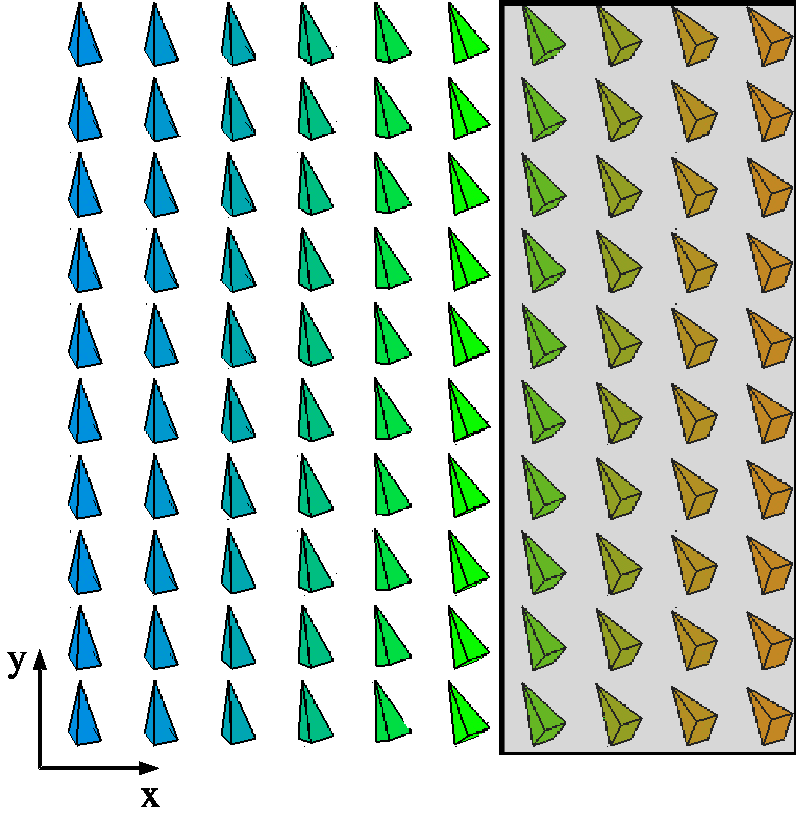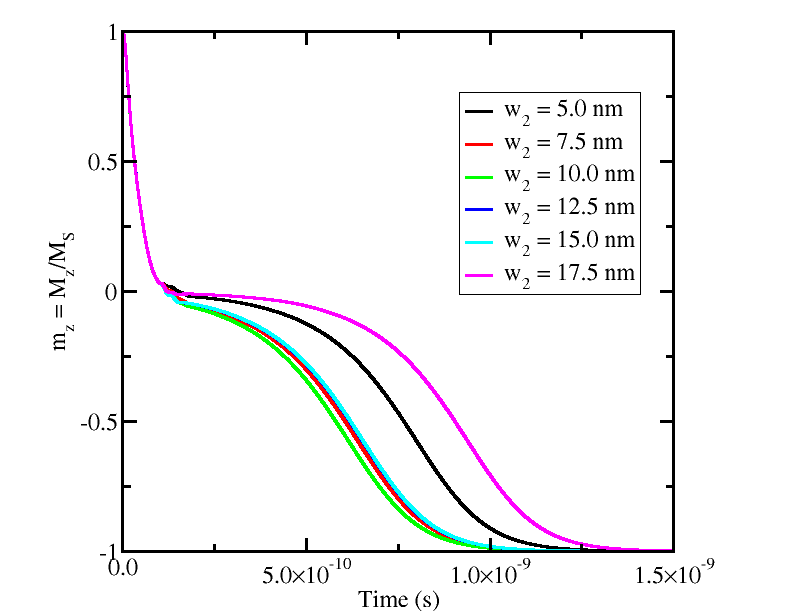 |
|
||||
BiographyRoberto Lacerda studied electrical engineering at the University of Campinas (Unicamp), where he received a Bachelor degree in 2004 and a Master degree in 2006. He joined the Institute for Microelectronics in October 2006, where he received his doctoral degree in 2010 and worked as a post-doctoral researcher until 2013 focused on modeling and simulation of electromigration and reliability issues in interconnects of integrated circuits. From 2014 to 2018 he was Assistant Professor at the Faculty of Electrical and Computer Engineering of Unicamp. In October 2018 he rejoined the Institute for Microelectronics as a research scientist on non-volatile magnetic memory devices. |
|||||
Switching of a Perpendicular Spin-Orbit Torque MRAM Cell with a Square Free Layer
Spin-orbit torque magnetoresistive random access memory (SOT-MRAM) is a promising future nonvolatile memory solution. In particular, it is a viable option for a nonvolatile replacement of high-level caches, as it delivers a high operational speed and great endurance. In order to achieve deterministic SOT switching of a perpendicularly magnetized free layer, however, an external magnetic field is required, which is cumbersome for large-scale integration. In order to circumvent this issue, several field-free schemes have been proposed. One of these schemes is based on the application of two orthogonal current pulses to two heavy metals in contact with the magnetic free layer. The first current pulse puts the magnetization in the plane of the free layer, perpendicular to the current direction, while the second current pulse completes the switching deterministically.
When applied to a free layer of rectangular shape, the second pulse rotates the magnetization towards the long axis of the free layer. The existing in-plane shape anisotropy field plays the role of the external field, which leads to the deterministic switching of the magnetization. In turn, there is no shape anisotropy field to support the switching in a symmetric, square free layer. Thus, the deterministic magnetization switching of the square free layer is accomplished by an effective in-plane magnetic stray field created dynamically by the second pulse. The spatial magnetization distribution after the two current pulses is shown in Fig. 1. After the magnetization is placed in the plane of the free layer by the SOT due to the first current pulse, the SOT generated by the second current pulse rotates the magnetization under the second heavy wire (highlighted in gray) towards -x. In this case, the stray field of the free layer part under the second wire lies in the plane and has an x-component transverse to the magnetization of the rest of the free layer. This field guarantees the deterministic switching of the square free layer.
Fig. 2 shows a comparison between the magnetization dynamics for structures with different overlaps between the second heavy metal wire and the free layer. The optimal overlap is found to be between 30% and 60% (7.5 nm and 15.0 nm), as the switching remains practically the same with a very short switching time of 0.6 ns.

Fig. 1: Spatial magnetization distribution after the two current pulses are applied to the cell.

Fig. 2: Magnetization switching for different overlaps between the second heavy metal wire and the free layer.


